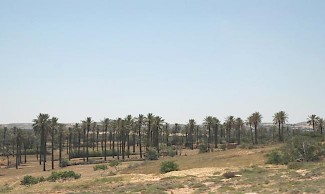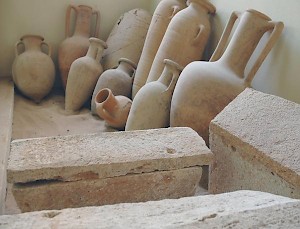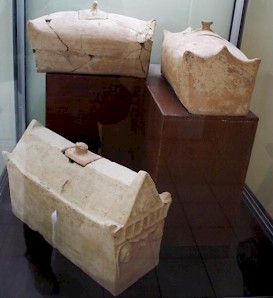Cinyps (Wadi Qaam)
Q5121128Cinyps (modern Wadi Qaam or Wadi Kaim): small river in Tripolitana, site of a failed Greek attempt to build a city.

"The fairest spot of all Libya": that is how the Greek researcher Herodotus of Halicarnassus calls the land along the river Cinyps.note It is now known as Wadi Qaam or Wadi Kaim. Its fame was known to the Greeks, who had already settled in the Cyrenaica and decided to built another town near the Cinyps, far to the west of the earlier colonies.

The founder of the new city was the Spartan prince Dorieus, younger brother of king Cleomenes, and elder brother of the future king Leonidas (who was to die at Thermopylae). In 515/514, the settlers landed at Cinyps. Herodotus writes:
Dorieus asked the Spartans to give him a company of followers, and led them out to found a colony, without either inquiring of the Oracle at Delphi to what land he should go to make a settlement, or doing any of the things which are usually done; but being vexed he sailed away with his ships to Libya, using the people of Thera as his guides. Having come to Cinyps, he made a settlement in the fairest spot of all Libya, along the banks of the river; but in the third year, he was driven out from thence by the Macae and the Libyans and the Carthaginians, and returned to Peloponnese.

The new town was close to the Phoenician colony Lepcis and was probably seen as a threat by the inhabitants. It is not clear why the native Macae hated the settlers. Anyhow, the Lepcitanians and the Macae asked help from Carthage, which was to retain some sort of suzerainity.
During several rescue excavations, archaeologists have confirmed the importance of the town. Although the Spartan settlement has remained elusive, a cemetery was discovered where people were buried from the third century BCE to the first century CE. The people were cremated and their remains were interred in stone, house-shaped boxes. Sometimes, these boxes had metal grips.
Amphoras were also excavated, together with several other types of pottery, including imported black painted Campanian ware (from Italy) and eastern red slip ceramics, which must have been some sort of luxury to the people of the Cinyps settlement.
Later, Italian red slip ware and imports from Cyprus replaced the earlier ceramics.